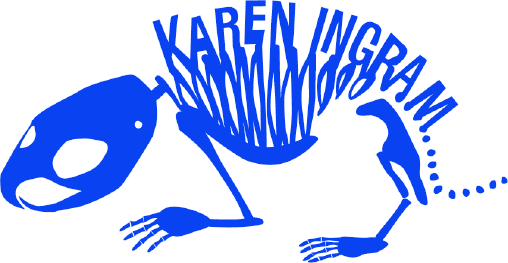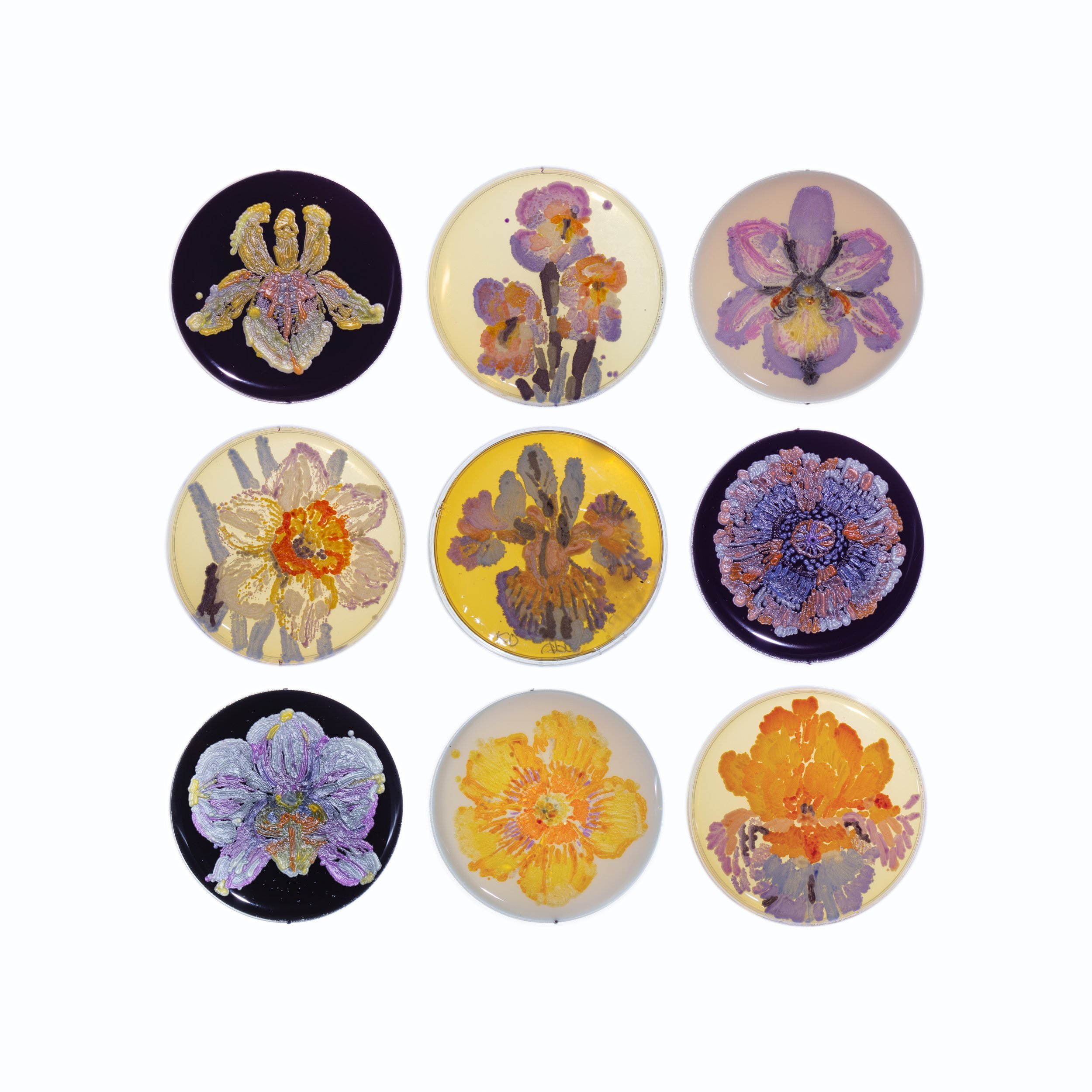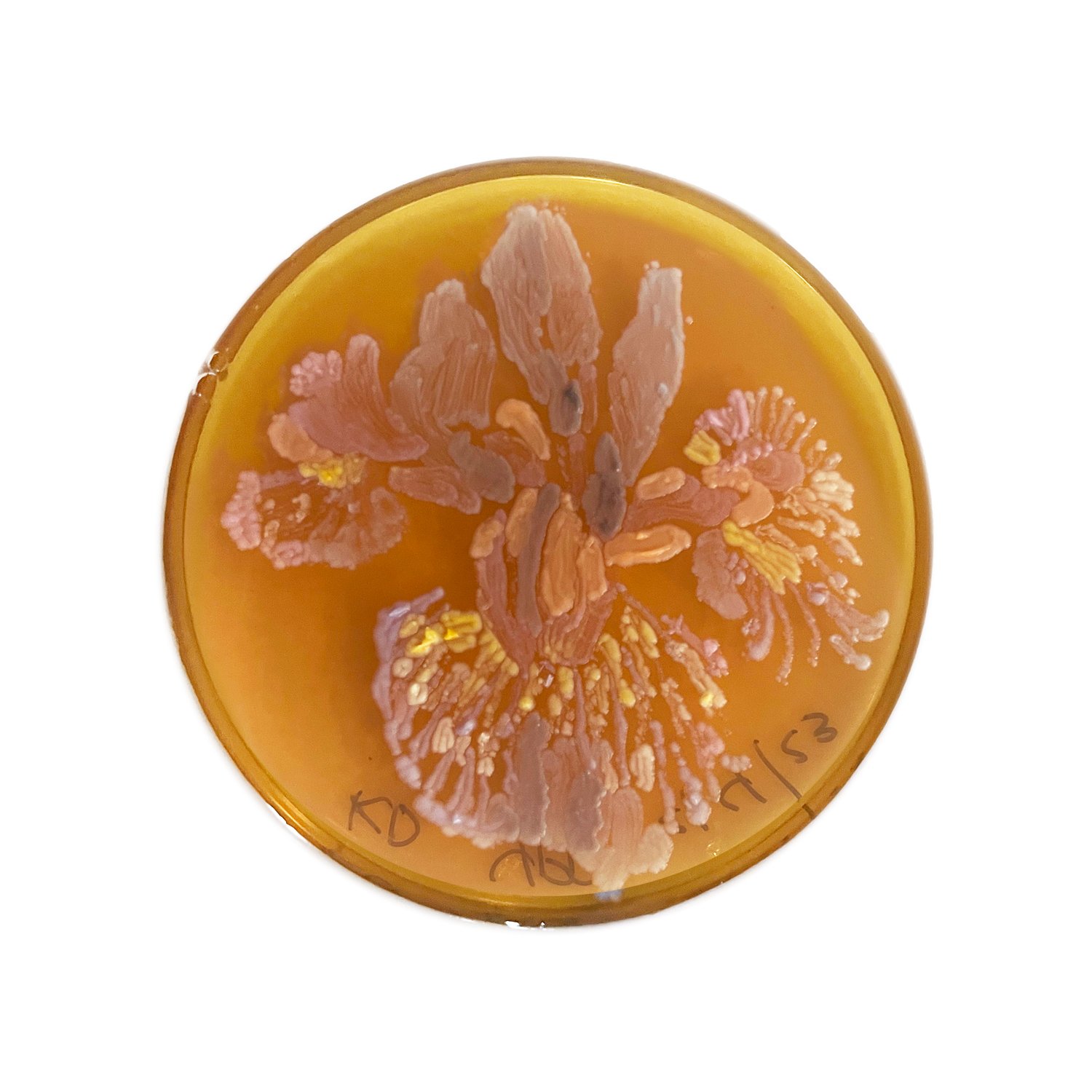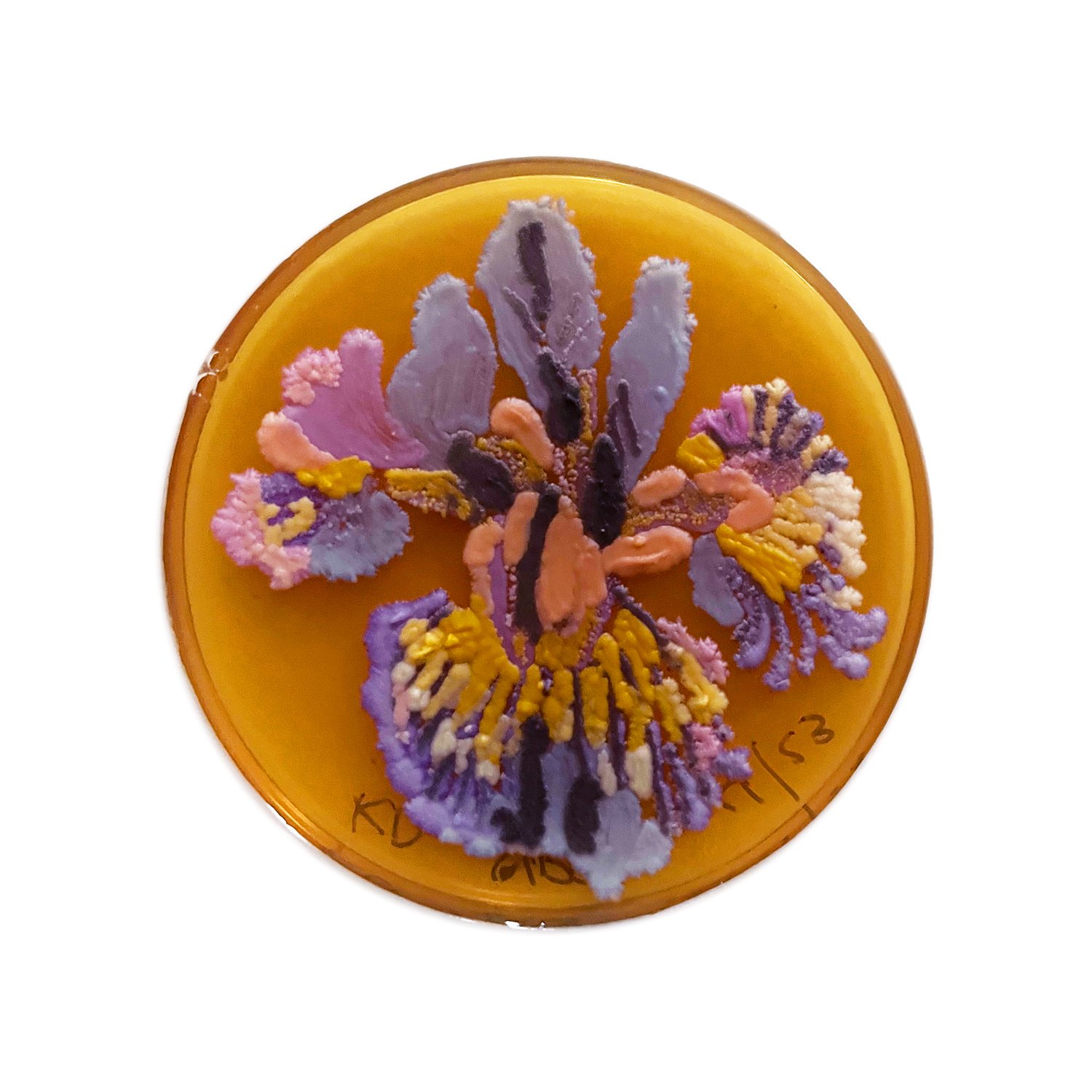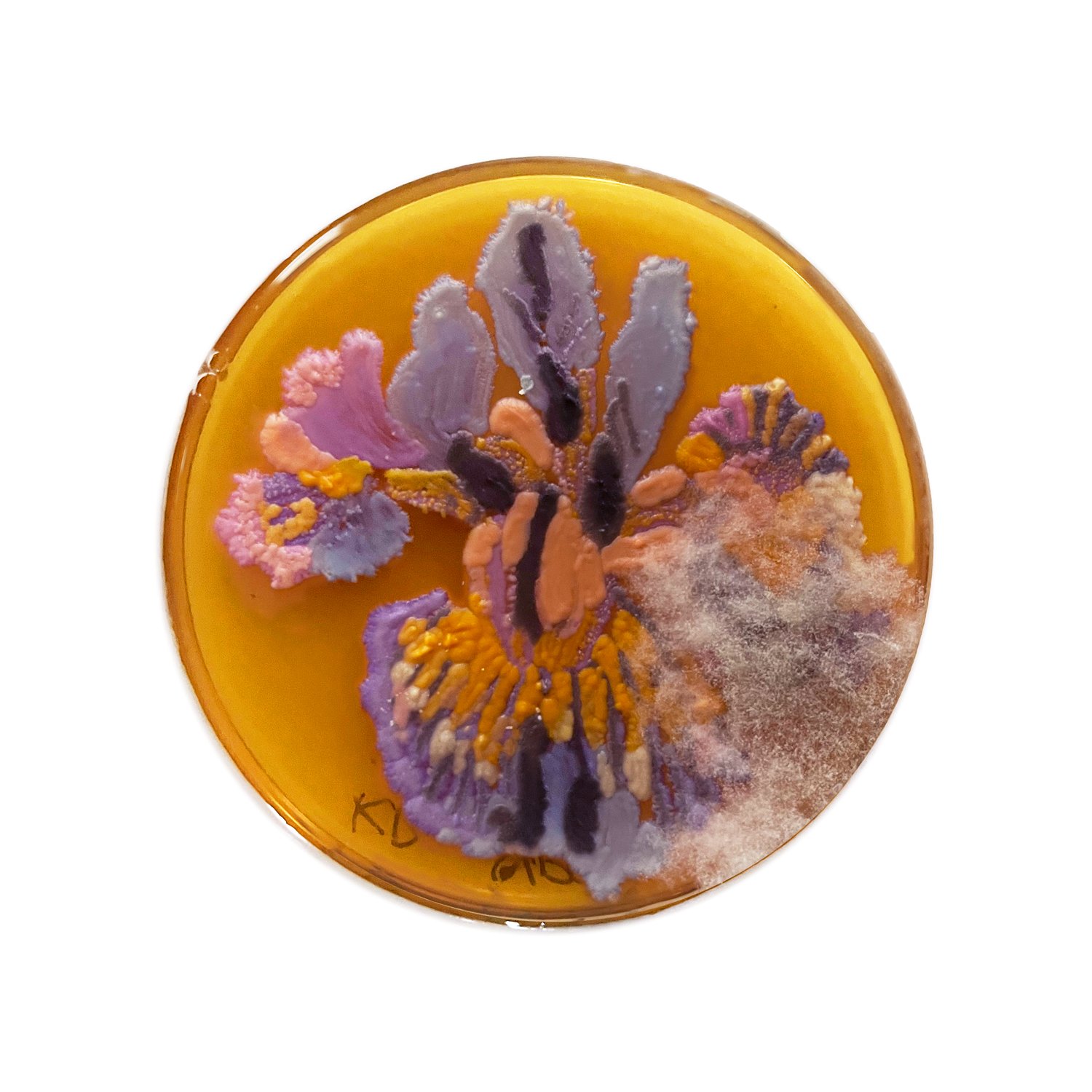Biogenetic Blooms: Iris 8, yellow, 2023
“Biogenetic Blooms: Collaborations with Genetically Modified Yeast”
“Biogenetic Blooms: Collaborations with Genetically Modified Yeast” is a series of floral inspired paintings made with genetically modified Saccharomyces cerevisiae (S. cerevisiae, commonly known as “Baker’s yeast”) on Petri dishes. The cycle of care that is necessary for these paintings to grow makes them both beloved pet and living artwork. These strains of yeast are grown and tended to on beds of agar, filled with nutrients that allow them to thrive. They are handled with care; with clean gloves on prepared surfaces to protect them from contamination microbes, and positioned upside down when they are incubating and cooling to keep evaporating water from flooding their surfaces.
The color palette in these paintings is composed of strains of S. cerevisiae engineered by the Boeke lab at NYU and Amino Bio in Canada. The colors of the palette include yeast engineered to express colored proteins from the DNA sequences of jellyfish (pink and fluorescent green), sea anemone (blue), coral (purple), and proteins from the metabolic pathways of violacein (found in bacteria; black and gray) and beta carotene (found in carrots, sweet potatoes, and red peppers; yellow, orange, and red).
In the spirit of what Donna Haraway has dubbed “making kin,” these living paintings are collaborations between microbes, engineers, and artist and have a life cycle that can be observed in color. When the paintings are first made, the pigment is mostly invisible. The paintings are incubated at their optimal temperature, 30°C for several days. The first signs of color begin to show after 24 hours, with all colors present after 4 or 5 days. The paintings are then cooled at 4°C. Most colors become more vibrant and saturated after being chilled at 4°C for a few weeks. After a few months, the colors slowly begin to grow muted as the yeast continues to age and the agar dehydrates, giving the dishes the feel of pressed flowers preserved on paper.
Additional projects
“Biogenetic Blooms” at BioBat Art Space
“Biogenetic Blooms” preliminary study: hibiscus 3 orange, poppy 6 peach, Iris 8, yellow" (closeup) 2023
“Biogenetic Blooms”: Preliminary studies
Each Petri dish painting is loosely planned on vellum in colored pencil and sharpie, based on the expected gene expression of the color in the palette. Sometimes the yeast will express slightly different hues than anticipated. For example, in some instances, anemone blue expresses as dark and vivid, some pastel, and some reject the anemone DNA and express only as white, with variants in between.
The flowers depicted are significant; culturally, politically, scientifically. From Daffodil DNA used to produce Vitamin A in “Golden Rice,” to the Snapdragon’s transcription circuit, which was used to encourage production of anti inflammatories in the new purple tomatoes, to the mania-inducing tulip: bulbs sold at 10x the annual income of a skilled artisan in the 1630s. These blooms in their sympoetic relations with humans and nature, are seeded in complicated histories and futures.
Acknowledgments and Thanks
I’m very grateful to the organizations, institutions, and individuals below for materials support and expertise.
Amino Bio
Julie Legault
Sarai Mena
Carolyn Hall
Clarinda Mac Low
Elena Soterakis
Eve Barro
BioBAT Art Space
Genspace
Leslie Mitchell at Neochromosome
The Jef Boeke Lab at NYU Langone
Daniel King & Locus of Occult
Aleksandra Wudzinska
Beth Tuck
Julie Wolf
Biogenetic Blooms were previously on display as part of “Embodied Futures and the Ecology of Care” @ BioBAT Art Space
From Saturday, October 14, 2023 until Saturday, March 16, 2024
Curated by: Elena Soterakis & Eve Barro
More about the exhibit & BioBAT–>
To purchase artworks, please contact me for artwork availability. Artworks can be viewed here.
